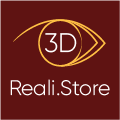Augmented Reality (AR) is an innovative technology that is gaining popularity in various fields. It allows virtual elements to be overlaid onto the real world, creating immersive experiences. The use of augmented reality in education offers numerous benefits for both teachers and students.
In this article, we will discuss the use of augmented reality in education, its advantages, and how it can be used in the classroom.
The foundations of augmented reality in education
Augmented Reality (AR) is defined as a technology that overlays virtual elements onto the real world. It can be used with smartphones, tablets, and augmented reality glasses. In education, AR can be used to provide more immersive and engaging learning experiences to students. It also offers practical benefits, such as the ability to visualize 3D elements or simulate situations that are difficult to reproduce in real life.
The use of augmented reality in education dates back to the 1990s when researchers began experimenting with AR systems for learning. Since then, it has become more accessible and easier to use due to technological advancements. Augmented reality is often confused with virtual reality, but unlike the latter, it does not create an entirely new world but simply overlays virtual elements onto the real world.
The advantages of augmented reality in education
Augmented Reality (AR) can have a tremendous impact on student learning. Firstly, AR can enhance student engagement in the classroom by making subjects more interesting and appealing. Students can explore concepts in 3D, which can help them better understand difficult subjects and remember information more easily.
AR can also have a positive impact on learning in science, math, and English. For example, teachers can use AR to create more immersive learning experiences, such as science lab simulations or virtual tours of historic places for English learning. Students can also manipulate virtual objects in math, which can help visualize abstract concepts.
Finally, AR can provide students with more memorable learning experiences. Students can use AR applications to discover interesting facts about learning subjects, which can help them remember the information later. Teachers can also use AR to create interactive learning scenarios that allow students to solve problems using their understanding of the subjects.
Practical use of augmented reality in the classroom
There are many examples of using augmented reality in the classroom. Teachers can use augmented reality to enhance learning experiences in STEM subjects (science, technology, engineering, and mathematics), such as biology, physics, and chemistry. They can also use augmented reality to create interactive learning scenarios in history, geography, and English.
To integrate augmented reality into their classes, teachers can use digital tools such as augmented reality apps for smartphones and tablets, or augmented reality glasses. They can also use augmented reality kits that include markers and augmented reality creation software to create their own custom learning experiences.
There are also many augmented reality resources and apps available for teachers. Some examples include “Google Expeditions,” which offers virtual tours of museums and historic sites, “Anatomy 4D,” which allows students to explore the human body in 3D, and “Quiver,” which lets students color in drawings and see them come to life in 3D through augmented reality.
Conclusion
In conclusion, augmented reality is an innovative technology that can have a huge impact on student learning. By using augmented reality in the classroom, teachers can improve student engagement, STEM learning, and provide more memorable learning experiences. There are many augmented reality resources and applications available for teachers.


